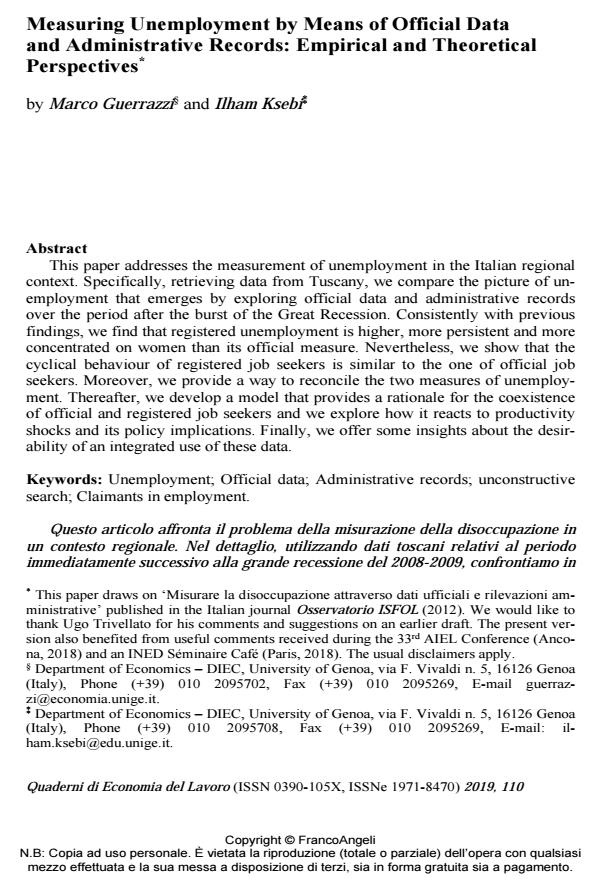Measuring Unemployment by Means of Official Data and Administrative Records: Empirical and Theoretical Perspectives
Journal title QUADERNI DI ECONOMIA DEL LAVORO
Author/s Marco Guerrazzi, Ilham Ksebi
Publishing Year 2020 Issue 2019/110
Language English Pages 33 P. 17-49 File size 735 KB
DOI 10.3280/QUA2019-110002
DOI is like a bar code for intellectual property: to have more infomation
click here
Below, you can see the article first page
If you want to buy this article in PDF format, you can do it, following the instructions to buy download credits

FrancoAngeli is member of Publishers International Linking Association, Inc (PILA), a not-for-profit association which run the CrossRef service enabling links to and from online scholarly content.
This paper addresses the measurement of unemployment in the Italian region-al context. Specifically, retrieving data from Tuscany, we compare the picture of unemployment that emerges by exploring official data and administrative records over the period after the burst of the Great Recession. Consistently with previous findings, we find that registered unemployment is higher, more persistent and more concentrated on women than its official measure. Nevertheless, we show that the cyclical behaviour of registered job seekers is similar to the one of official job seekers. Moreover, we provide a way to reconcile the two measures of unemploy-ment. Thereafter, we develop a model that provides a rationale for the coexistence of official and registered job seekers and we explore how it reacts to productivity shocks and its policy implications. Finally, we offer some insights about the desir-ability of an integrated use of these data.
Keywords: Unemployment; Official data; Administrative records; unconstructive search; Claimants in employment.
- Wage and employment determination in a dynamic insider–outsider model Marco Guerrazzi, in Evolutionary and Institutional Economics Review /2020 pp.1
DOI: 10.1007/s40844-019-00158-w
Marco Guerrazzi, Ilham Ksebi, Measuring Unemployment by Means of Official Data and Administrative Records: Empirical and Theoretical Perspectives in "QUADERNI DI ECONOMIA DEL LAVORO" 110/2019, pp 17-49, DOI: 10.3280/QUA2019-110002